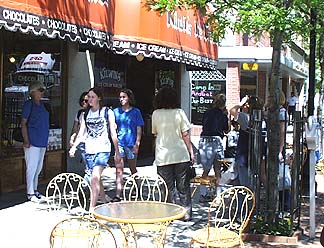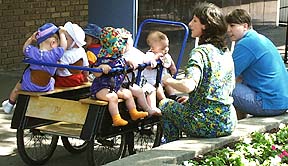
The writer and urban critic William Whyte has been the biggest proponent of the street as a critical place of social interaction, and has been disturbed by the street and the sidewalk being overlooked when developing plans.
The street--particularly in the center Pedestrians and downtownsour cultural legacies. It is the river of city life. It gives the city continuity and coherence. It defines its scale. But it is under attack....In a trend that is gathering momentum, the street is being put almost anywhere except at street level. It is being buried in subterranean corridors; it is being elevated on platforms or put in glass tubes. Finally, it is being obliterated altogether, enveloped by megastructures hermetically sealed against the city. This movement is profoundly wrong. For everything that we are learning about what people seek in the city indicates that what they like best are the things that are basic to it.1

Whyte goes on to describe the attraction people have for heavily used spaces. They are not looking for solitude, but for interaction. In his research in New York City, he found the street was a primary social space, and a successful street has a critical mass of people and activity. The spaces people most enjoyed were the ones that were most intensely used. He explains the dichotomy of this situation, for in surveys people will indicate they want a retreat or an oasis. Yet what they do is completely different, for what attracts people most is other people.

1 William H. Whyte, Jr. 1980. "The Humble Street." Historic Preservation. January 1980. pp. 34-36.
| Automobiles and Pedestrians | The Neotraditional Perspective |
|---|
| William Whyte's View | Physical Strategies |
|---|
| Case Study Cities |
|---|
